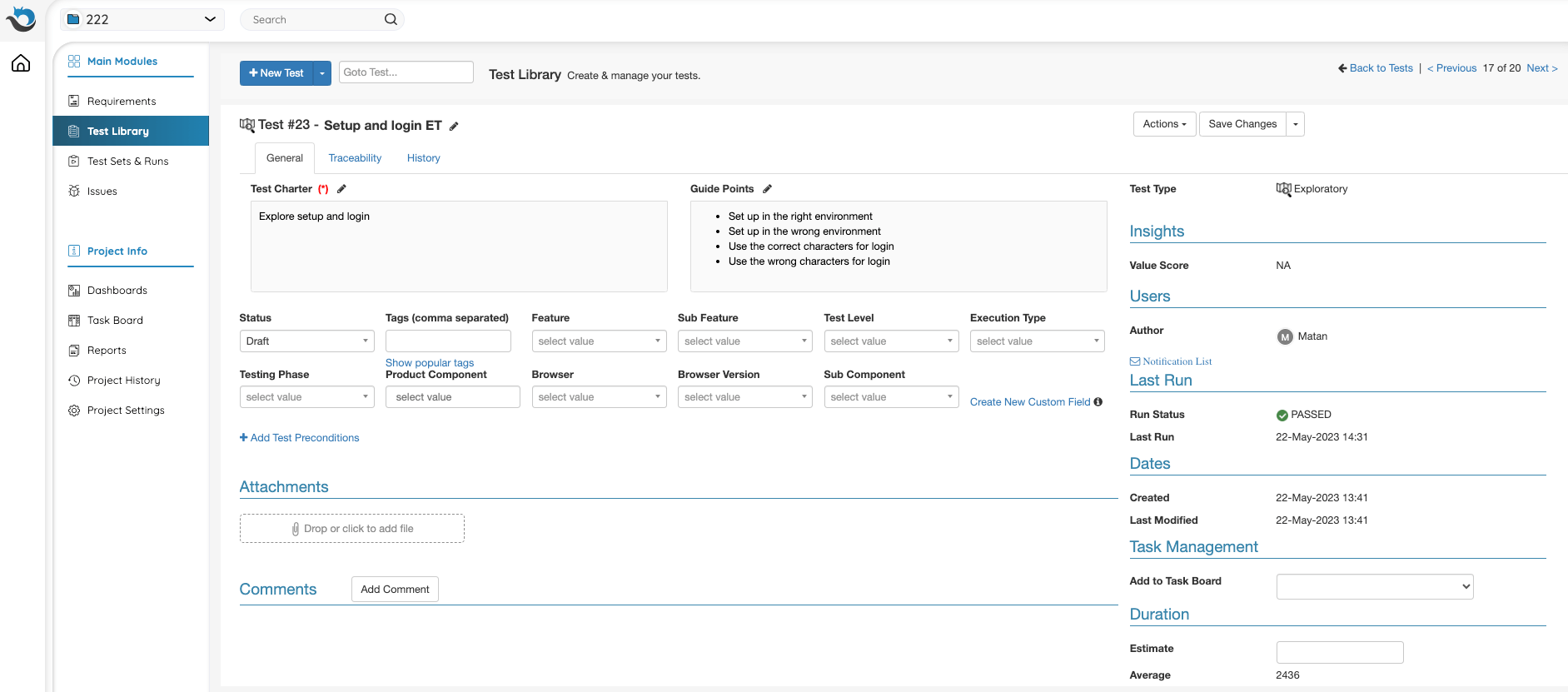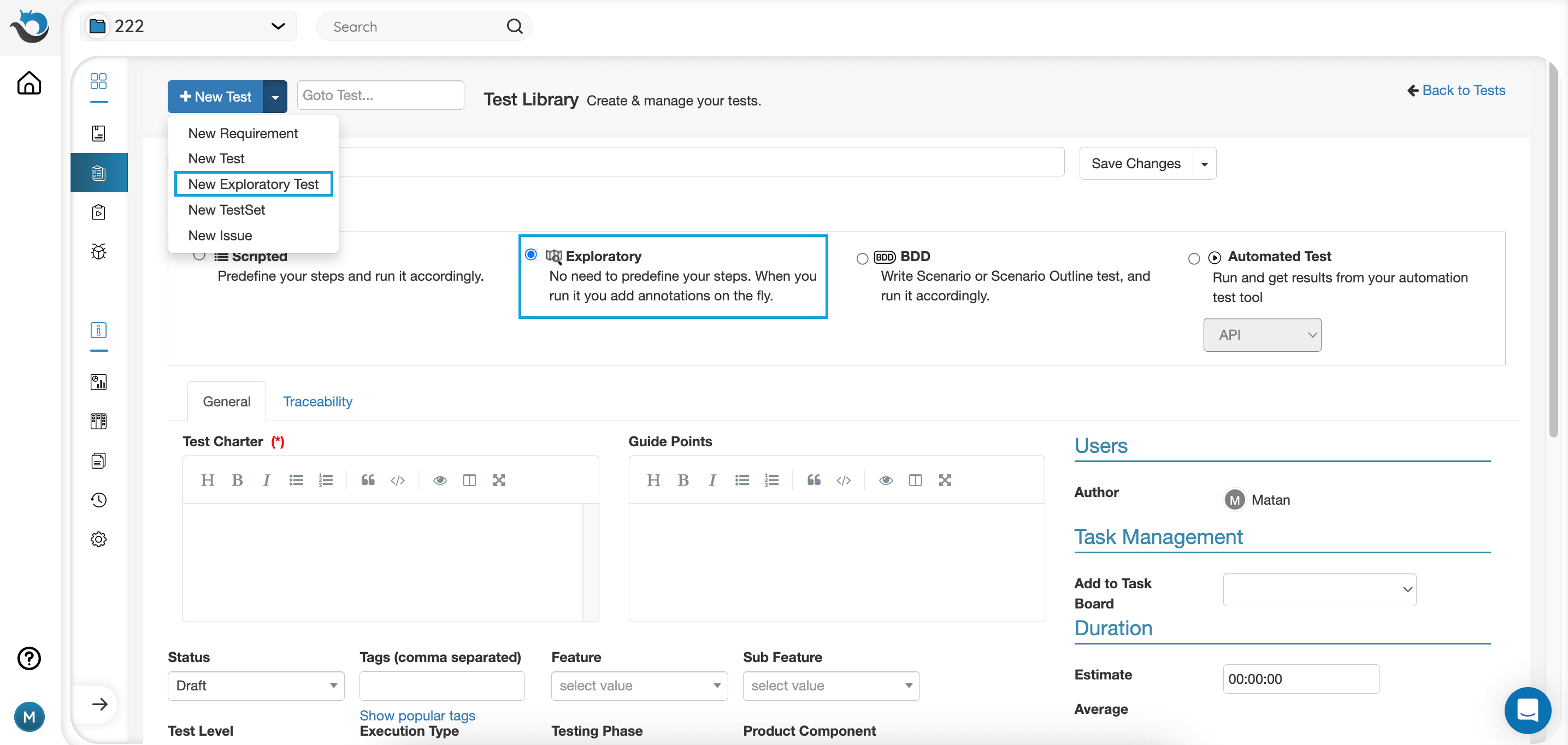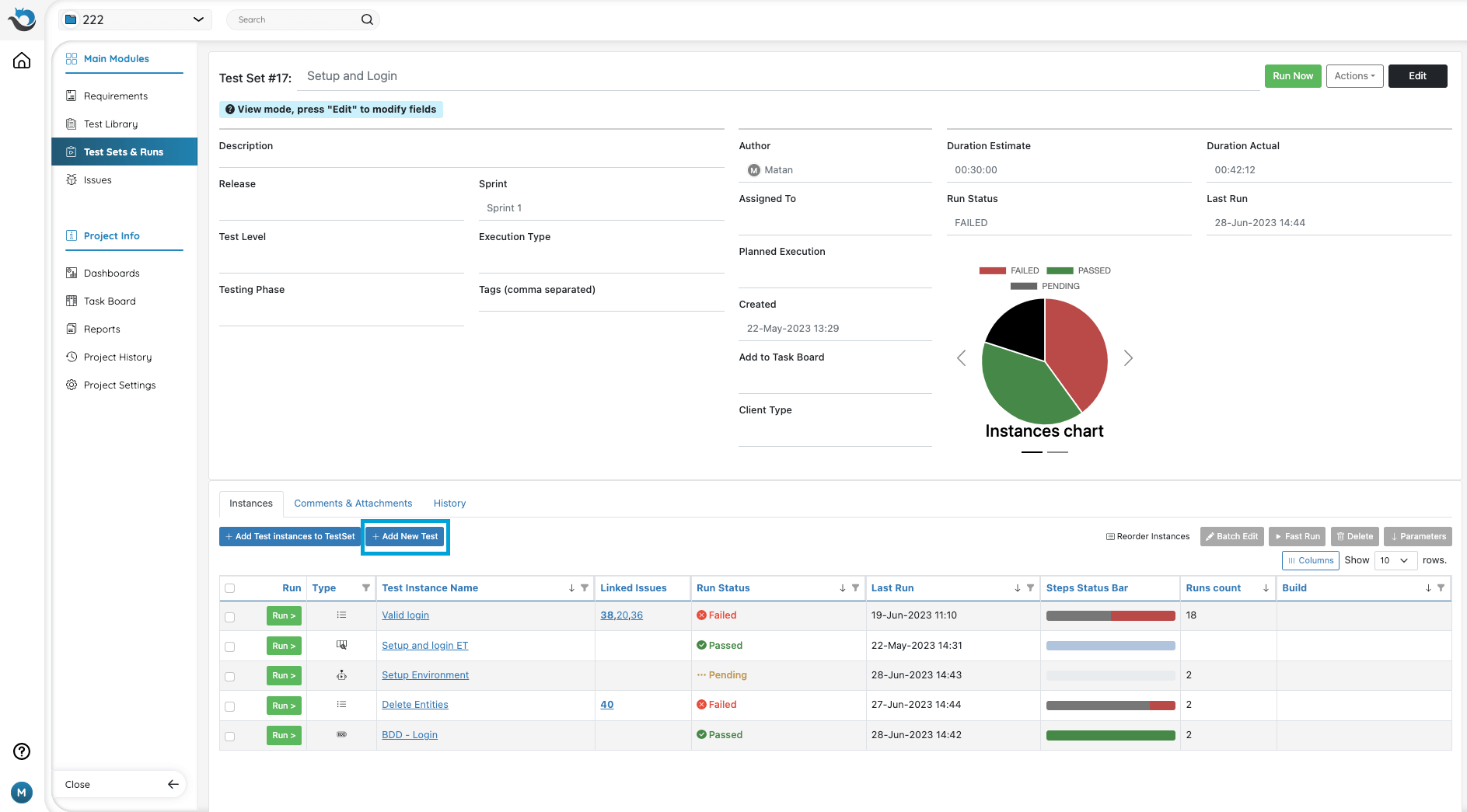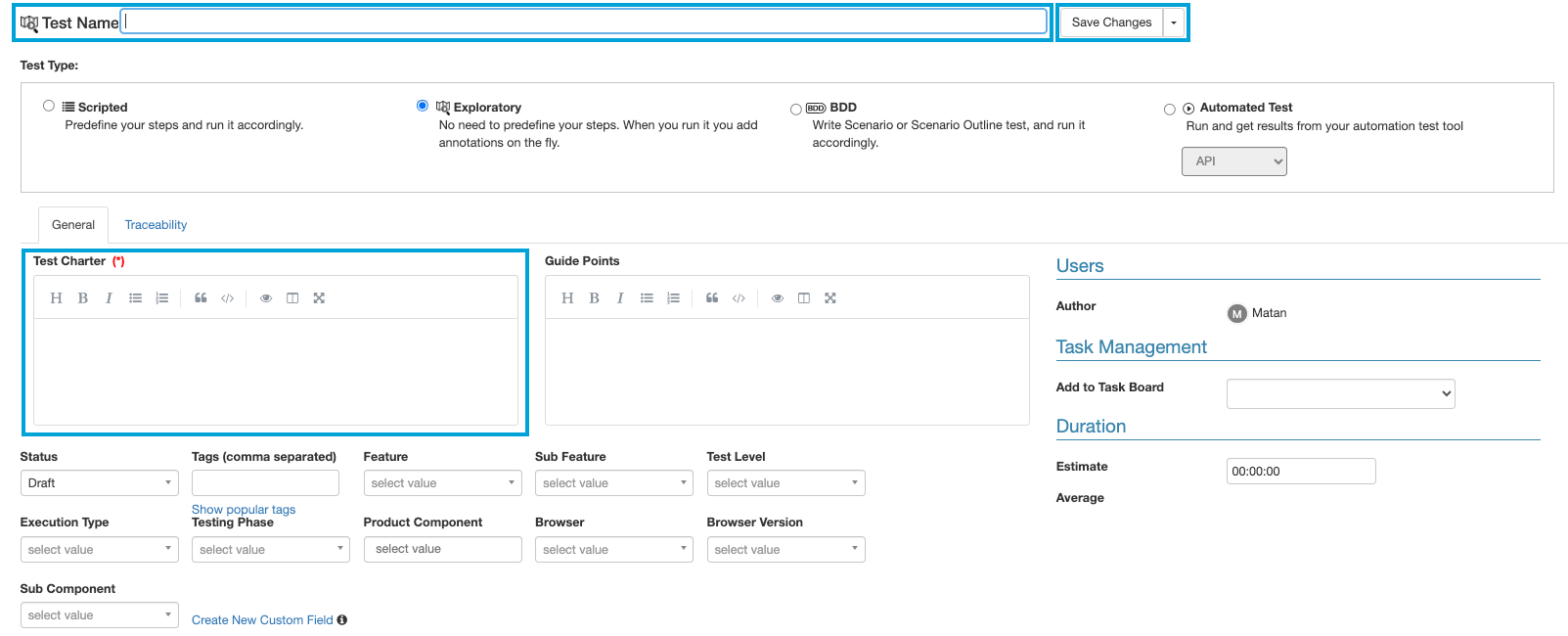Exploratory Tests (ET) in PractiTest allow you to define Charters & Guide Points for ET Sessions, document annotations as tests are run, report and link bugs directly from runs, and review ET sessions with colleagues in order to gather feedback.
Exploratory Test Structure
Exploratory Tests display the Title, Charter (equivalent to the regular test description field), and Guide Points. Like other tests, ET test cases include a traceability tab. This provides historical activity and reflects test logs and field areas to define the test attributions and attachments. The traceability tab links to requirements and issues. Users can run the ET on multiple test sets and add annotations while running Exploratory Tests.
Create an Exploratory Test
Exploratory Tests can be created either from the test library by clicking ‘New Test’ and changing the type to Exploratory, or by selecting the dropdown at the top-left of the screen and choosing ‘New Exploratory Test’. Like other tests, ETs can also be created directly from a test set by clicking on ‘New Test’ and choosing the ‘Exploratory’ option.
Enter the required Test Title and Test Charter. Other custom fields can be filled in, as well. Learn more about defining custom fields here.
You can enter descriptive steps in the Guide Points field to further focus your test instance. In addition, you can enter an estimated duration for the test instance and compare it to the actual duration as explained here. When done with set up, click “Save Changes”.
Run an Exploratory Test
Please see the instructions here.



